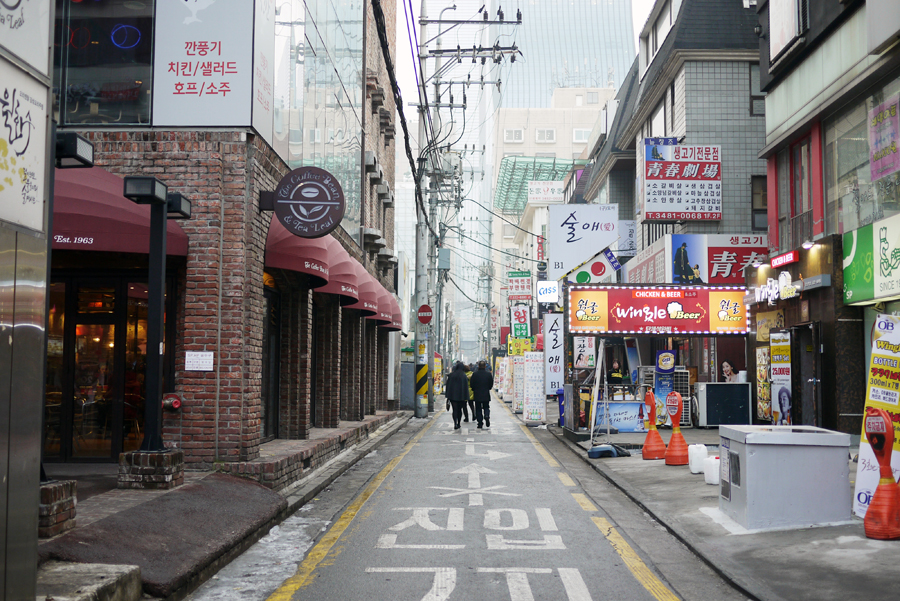Shopping Bag
0
- No products in the cart.

The three vending machines stand like museum pieces, the last of their kind. A South Korean man plunks a few coins into the one marked Nescafé and a few seconds later, out pops a small paper cup filled with cheap, steaming coffee.
Years before the advent of the iced caramel macchiato, these three relics from the early 1990s were part of a larger army of about 50 machines that once formed the cornerstone of Gangneung’s now-famous Coffee Street.
These three vending machines are what remain of the dozens of coffee-vending machines that once gave Coffee Street its name. Now South Koreans prefer to get their coffee from the huge number of shops that have spread throughout the country in recent years. (Kim Brunhuber/CBC)
Coffee Street sits on the coastline, along Anmok Beach in the city of Gangneung, about 150 kilometres east of Seoul. Fifteen years ago, visitors would buy fresh seafood, then grab a 50-cent cup of coffee and sit by the sea. Nowadays you can’t throw a stone without it landing in a $7 cup of single-origin organic pour-over.
There are about 40 cafés lining the half-kilometre stretch of road. And according to Moon Hyun Mee, a manager at Coffee Cupper, these days it seems as though half the women in Gangneung have been trained as baristas.
Coffee Street in Coffee City
“Coffee makes up about 70 per cent of the local economy in the Gangneung area,” she says as she whips up a latte for a customer. “Many people come from overseas to go on tours of Coffee Street.”
According to Statistics Korea, there were about 88,500 cafés nationwide in 2017, up 63 per cent from two years previous. (Kim Brunhuber/CBC)
Gangneung itself is known as Coffee City. It epitomizes a craze that has swept South Korea in the last decade.
According to the Korean Ministry of Agriculture, the coffee market has tripled over the last 10 years to $5.7 billion US. According to Statistics Korea, there were about 88,500 cafés nationwide in 2017, up 63 per cent from two years previous. Some estimates suggest that every month as many as 300 new coffee shops open their doors.
Coffee is popular, but almost half of new South Korean coffee shops go out of business within 12 months. (Kim Brunhuber/CBC)
Some have attributed this to the arrival of Starbucks in 1999, which introduced the concept of high-end coffee as a status symbol. Almost 20 years later, Seoul has more Starbucks locations than any other city in the world, testament, some say, to the nation’s affinity for American culture.But Shim Seung Su, the son of a coffee roaster who’s now opened his own café near Coffee Street, has another theory. Coffee shop culture, he says, actually took off 10 years ago because of a smash TV show called The 1st Shop of Coffee Prince.
“Before that drama we didn’t have that many customers,” he says. “But after Coffee Prince started airing, the number of people buying coffee has gone up a lot.”
http://www.cbc.ca/news/world/coffee-street-south-korea-olympics-1.4529750
Free Shipping On All Orders $200+ |
